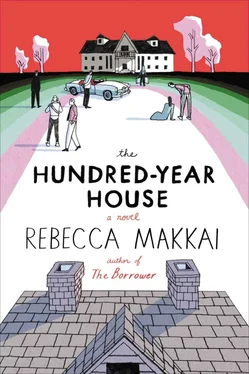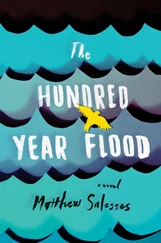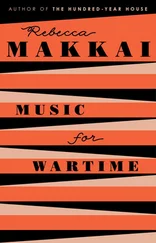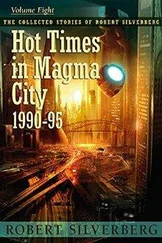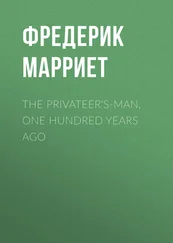—
Out on the terrace at midnight, Marlon, terribly soused, his head finally clear: “Only oaks will do that. They always split or explode. And they draw it, they actually draw the lightning to them. Beware the oak! It draws the stroke! ”
Josephine told him, fondly, to shut his mouth and write a book about it.
Viktor refused to speak.
—
In 1933, Zilla would watch him dance Albrecht in Giselle , his last performance before he vanished. She would sit in the second-to-last row and dart out at intermission.
—
From 1929 to 1954, forty novels, seven symphonies, fifteen dances, around three hundred stories, and over five thousand poems were completed at Laurelfield. Six times as many of each were begun or continued. Which isn’t to mention the concertos and memoirs, the photographs and charcoal sketches. Seventy love affairs were begun, and forty-two were ended. One woman died in the bathtub. A poet hanged herself in the woods. A violin was hurled from the roof. Eight children were conceived. Between 1938 and 1945, seven Jewish artists from western Europe were allowed indefinite stays.
Some of this is a matter of record, the Laurelfield archives having been made public in the fall of the year 2000. Other stories, other sequences of events, are known only to Edwin Parfitt’s Olympian gods (if they have survived our neglect) or to the fates, or to the ghosts who keep watch. Count it as the universe’s cruelest irony that the ghosts, who alone could piece a whole story together, are uniquely unable to tell it.
One such tale: On October 18, 1944, Lieutenant Armand Cox, a photographer with the Army Signal Corps, climbed onto a barricade in the street outside the Hotel Quellenhof, in the bloody heart of the Battle of Aachen. His interest in the shot was journalistic, not tactical: just a German soldier up in the window. The frame, never developed, captured the soldier’s arm mid-motion. The grenade killed Lieutenant Cox, not the eighteen-year-olds below him on the street. His camera landed near his right leg and was, in any event, crushed soon after. In the window boxes of the hotel, there were still geraniums.
A year later, sorting through Armand’s things in their Rush Street apartment, Eddie found, in a box in the closet, a photograph of the love of his life, naked, laughing, on the night he first fell in love with him. One of the five copies Samantha had spread throughout the world to prevent Gamaliel Devohr from simply burning Laurelfield to the ground. That night Eddie made his way up Route 41 to Laurelfield, where he stood out back, at the edge of the woods, with a pistol to the flesh behind his chinbone.
He stood there an hour, until he couldn’t feel his legs, until he’d become part of the earth, until he thought he might grow leaves. The upstairs lights came on, one by one, as the artists finished their drinks and returned to their work or their trysts. Someone staggered back to the Longhouse. It was a revelation to him, those lights, the shadows behind the curtains: There were artists still up in those rooms, making art. There was good in the world. And the world was worth living in, it truly was. It just wasn’t worth being Edwin Parfitt. He had nothing left to write, and he had no one left to love, and he had nowhere left to go. His editor at Holt, himself just returned from the Pacific, had telegraphed that the public awaited his next work, his response to the war. The only thing that could make his grief even less bearable was feeling stared at, waited for. When all he’d ever wanted was to hide inside of something, to crawl inside a piece of furniture and become a mouse.
He wondered if he could move his finger on the trigger.
But look at those lights.
He lay on the ground and put the gun in the leaves. He slept, and as he woke at dawn he remembered a woman he’d met on his last stay, in ’41. Armand was already off at training, and it was Eddie’s first visit to Laurelfield without him. Her name was Alma Nellis. Hair like grapevine tendrils. This woman would shatter plates against the fountain lip, then mortar them back together in completely illogical ways. The final plate would be vaguely round, but jagged and jumbled. She destroyed and reconstructed an entire tea set this way. Cups no one would dare drink from. “Is it always china?” he asked, and she said, “Next will be a chair.”
He wondered if a man, a broken man, could be reconfigured in the same way.
When the sun was up, he knocked at Samantha’s door. She held his face in her hands as if he were returning from the dead, as if his had been the dog tags and left arm sent back from Aachen.
Her hair was longer now, wispy. She was softer somehow. She made him toast, and they sat at her table, and they talked about, of all things, the White Rabbits, and Josephine’s new solo work, and how she’d taken over the same seventh floor studio in the Fine Arts Building where Armand had once camped out. “She’s a worthy inheritor,” Eddie said.
Samantha said, “Eddie, I’m dying. I have cancer in my breast.”
He had nothing left — the night had drained him — but she understood. She didn’t expect anything. After breakfast they walked the grounds. Eddie said, “You’ll have to move the fish in soon.”
“Eddie, it should be you. The board would hire someone awful. Why can’t it be you instead?”
Eddie thought again of the smashed-up plate. He thought of Proteus, shifting shape and evading capture.
“Wouldn’t you want to? Wouldn’t you want to live here?”
When they finally stopped, at the bench by the pond, he said, “We’ve pulled two tremendous stunts here. The Chippeway raid, and the trapping of Gamby Devohr. Let’s do one more great and ridiculous thing.”
“I doubt I have the energy.”
“It’s called The Death of the Poet Edwin Parfitt.”
—
On October 29, a small circle of poets and artists and writers — some in residence at Laurelfield at that very time, some farther flung — gave testimony to the police about a drowning by suicide in Lake Glinow, Wisconsin, and the perverse funeral that followed. The artist Zilla Silverman and the composer Charles Ives together paid the hefty fine to the town hall that was all the police could come up with by way of penalty, after their fruitless inquest.
“Proteus Wept,” published posthumously in The American Mercury , drew quite a bit of attention, as did the man’s extraordinary suicide note.
Before her death the following spring, Samantha wrote a letter to Gamby reminding him of the poet Max Perry, “whose acquaintance you made in the summer of 1929. He was the one who took such fine care of your daughter Grace when you were incapacitated. I’m afraid he hasn’t made much of himself as a poet since that stay,” Samantha wrote, “but he is devoted to the arts, and would be an exceptional steward for Laurelfield. He also has possession of a file of particular interest to you. I expect his guaranteed employment and lodging as caretaker through at least the end of our agreement on September 1 of ’54.”
As for the artists who stayed there over the next ten years — a very few were friends who recognized him, but most were not. One writer, having been acquainted with Parfitt in Chicago and having mourned his death, wasn’t sure if his heart would recover till halfway through his stay. No one left talking about him, though — they all understood the charge of silence, and admission was, after all, selective — and so to everywhere that was not Laurelfield, Edwin Parfitt remained dead.
—
Zilla Silverman, on the other hand: Zilla’s was a real suicide. In February of 1956, a note from Lemuel, saying simply that she’d poisoned herself. Eddie knew it had nothing to do with Viktor. By then there had been other men. She’d flung herself at other closed windows. The windows never broke, but her heart, at the end, was in splinters. (Nor had Viktor’s breakdown had anything to do with Zilla Silverman. Except that had he found one love, one great love in his life, she might have kept him off the street, kept him warm and fed and sane. And Zilla might have been that love.) Eddie never learned what had changed for Zilla that particular February morning, beyond the obvious, beyond what one can assume about every suicide: that her unhappiness, in the end, had outweighed all the beauty of the world. Lemuel brought the ashes to Laurelfield. Josephine Lizer carved the statue of a bear that served as Zilla’s only headstone — the sculptor’s last completed work.
Читать дальше
